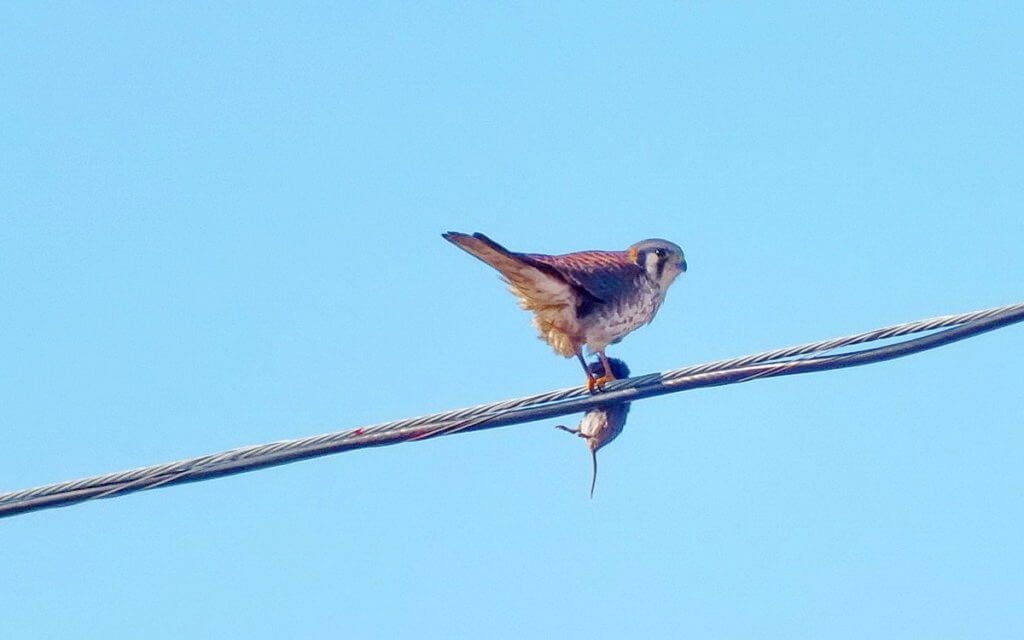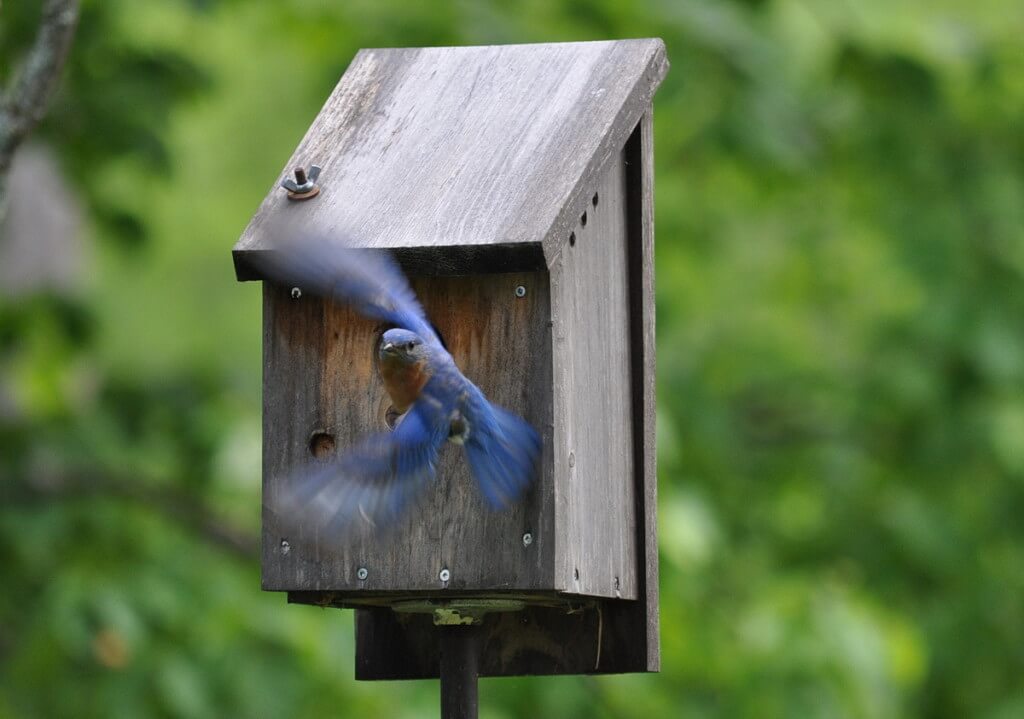American Kestrel Eats A Mouse Near Whitby

On an extremely warm and sunny spring day, Bob and I drove east to Whitby, in Ontario, for a walk at the various conservation areas found in that area. Along the roadway, we spotted an American Kestrel eating a mouse on a telephone wire.
American Kestrels are about the size and shape of a Mourning Dove, and in fact, as we drove along, I thought at first that is what I was seeing. But with the aid of my binoculars, I soon saw their larger, rounded heads that clued me in, and of course their coloring.
We had seen two kestrels in the same area a week earlier, so were on the lookout as we drove through the region. I think they must make their home, or at least their hunting ground, in the field adjacent to the highway there. American Kestrels prefer open country with few trees and low vegetation.
American Kestrels are North America’s smallest falcons, packing a predator’s fierce intensity into their little bodies. These birds are often referred to as Sparrow Hawks.
We observed this American kestrel as it ripped pieces from its prey, and were surprised just how long it worked at tearing apart its kill.
For a good half hour, the kestrel tore piece after piece from the little animal’s body, and at times, we could see little bits of fur being carried off on the wind.
In our video you get a chance to watch firsthand the American kestrel tearing into its prey.
American Kestrels can be recognized by their conspicuous black face markings, the rusty-red feathers of their backs and tails, and, in the males, a distinctly slate blue colour on the wings and crown of the head.
Although we kept our distance, the kestrels soon became aware of our presence.
About a 100 feet further along the street, a hawk was perched on a lamp standard. As we watched, it dove down into the long grass of the field and pounced on some other creature. The kestrels took notice of the activity thereabouts, and one of them quickly departed for another location across the meadow.
Hovering above a tiny bush, the American kestrel soon found purchase and took up its new resting spot.
Finally, the second falcon abandoned its feasting and flew over to join the other, being careful to securely transport its prey.
The kestrel was quite adept at grasping its prey in its talons.
The dead prey dangled heavily below as the American kestrel flew across to join its mate. I wondered if it would share its spoils.
Related:
Eastern Bluebirds with Fledglings at Oxtongue Lake


















I was wondering the same thing as I was reading and watching the videos. I guess it is every hawk for him/her self.
I think so, Bonnie. At one point, the second kestrel approached the one with the rodent, and was promptly discouraged from trying to get some of the food.